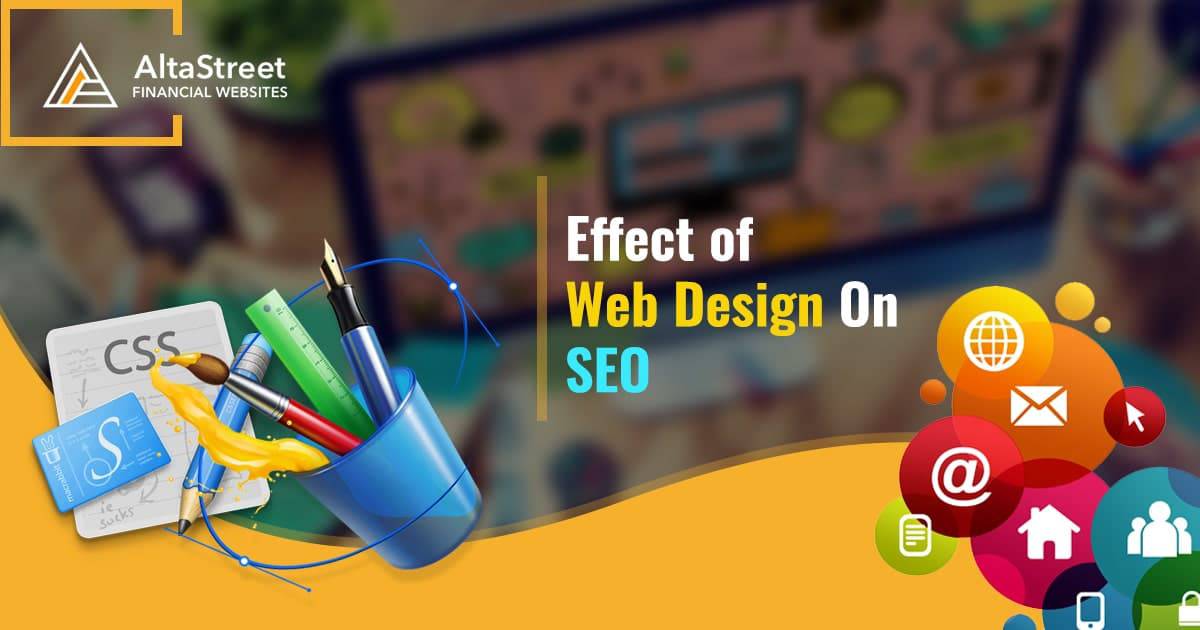
How Web Design Affects SEO Performance
SEO and web design may, at first, seem like completely unrelated disciplines. But in the real world, web design can significantly impact your site’s SEO rankings – both directly and indirectly.
If your web design focuses purely on looks and aesthetics, you’re going to end up ignoring other aspects that matter more to your users and search engines.
It’s important to have a balanced approach that addresses good design while effectively delivering your content.
Read on to find out which SEO concerns you should pay attention to when developing your website’s overall look and design.
User Interface (UI) and Bounce Rates
It’s best to think of a web page’s design as a user interface first and foremost. Even if your site has extremely valuable information to offer, it’s not going to be as useful if people can’t easily access the content they’re looking for.
Search engines also keep track of how much time a user spends on your site after they click on a search result. The algorithm sees the time spent on a site as an indicator of the site’s usefulness.
Alternatively, if someone only looks at a single page for a few seconds and quickly backs out of it, then your site’s credibility, and your SEO rankings, will go down. This metric is called bounce rate. You want to keep your bounce rate as low as possible if you want to increase your entire website’s credibility and improve your SEO performance.
Your page needs to be easy to read and very simple to use. You can’t just fill it with random buttons, links, ads, graphics, and extra features that people don’t really use. If you do want to add features, it has to be placed strategically so it doesn’t get in the user’s way.
Web design plays a huge role in creating a positive user experience. If your visitors and customers feel comfortable while using your site, you’ll get a lot more traffic and conversions.
Page Load Speed
Another reason to not just add a bunch of unnecessary graphic elements and features to your website is page load times.
If your pages take more than a couple of seconds to load completely, then people will lose interest. It will give them more reason to click the back button and move on to the next search result.
You have to make sure your images are properly compressed and optimized. Some of your site visitors may be using their mobile devices and have spotty connections. If your site takes ages to load, they might assume that it’s just broken and won’t bother waiting.
You also have to make sure everything on the back end is running properly. Get rid of unnecessary code or buggy scripts that are slowing down your page. Every second you cut from your page load times can make a huge difference in your bounce rates and SEO efforts.
Responsive and Mobile-Friendly Design
When you address the needs of your mobile users, you’re also addressing how search engines index your site.
In fact, Google has switched over to mobile-first indexing. This means that the mobile version of your website will be the first thing it tries to crawl, and will be the basis for your SEO rankings.
Aside from optimizing your website to work well on slow mobile connections, everything also has to show up properly once it’s done loading. This means making sure your text is easy to read, buttons are easy to click, and that the page’s layout makes sense on smaller screens and different resolutions.
Responsive design is an approach that ensures that web pages adapt well to all sorts of different screen sizes. This allows you to use the same page elements for both desktop and mobile views – the layout is just resized.
However, websites that have a lot of features might require a separate mobile site or mobile app. There are situations where responsive design is a little too limiting, and it’s just better to create an entirely different layout for mobile users.
The key thing is to ensure that mobile users can properly view your website. A website that’s not optimized for mobile will not only suffer from higher bounce rates, but will also be a poor reflection on your brand.
Key Takeaways
The ultimate goal of your web design team is to provide a great user experience to everyone who visits. Design choices like colors, fonts, and other visual elements should all work together to make your site’s content easily understandable and more accessible. If you make sure that everything is optimized properly and works correctly, you’ll have lower bounce rates and people will spend more time on your site. All of this also helps create a more positive impression of your brand and gives it more credibility in people’s minds.